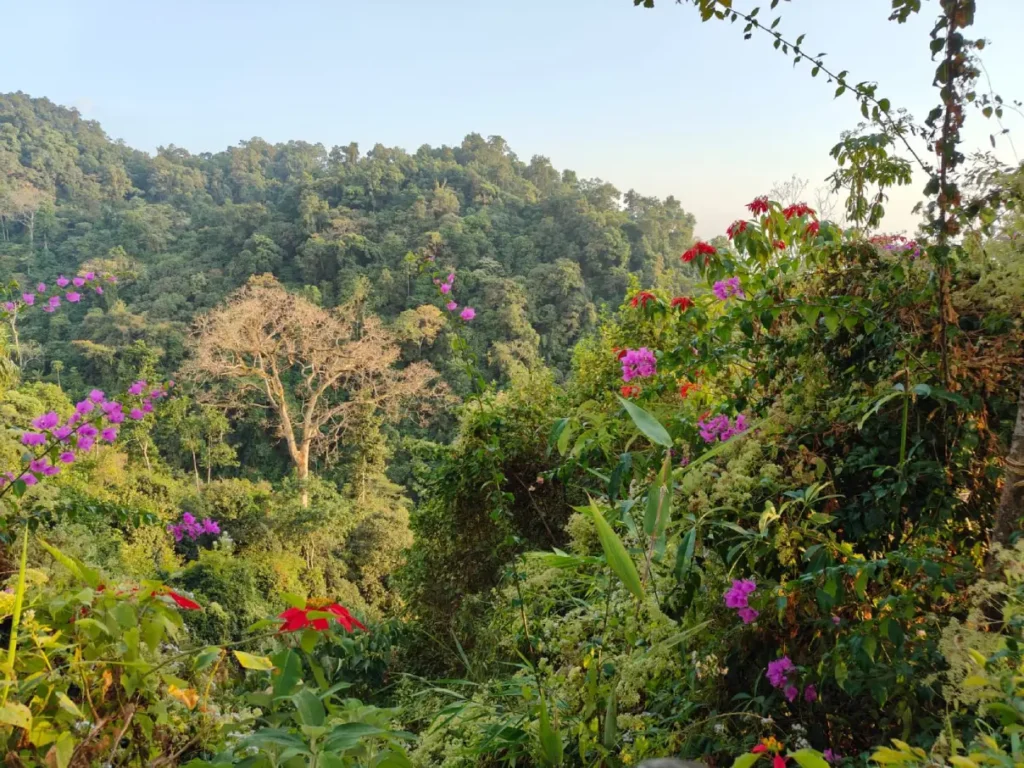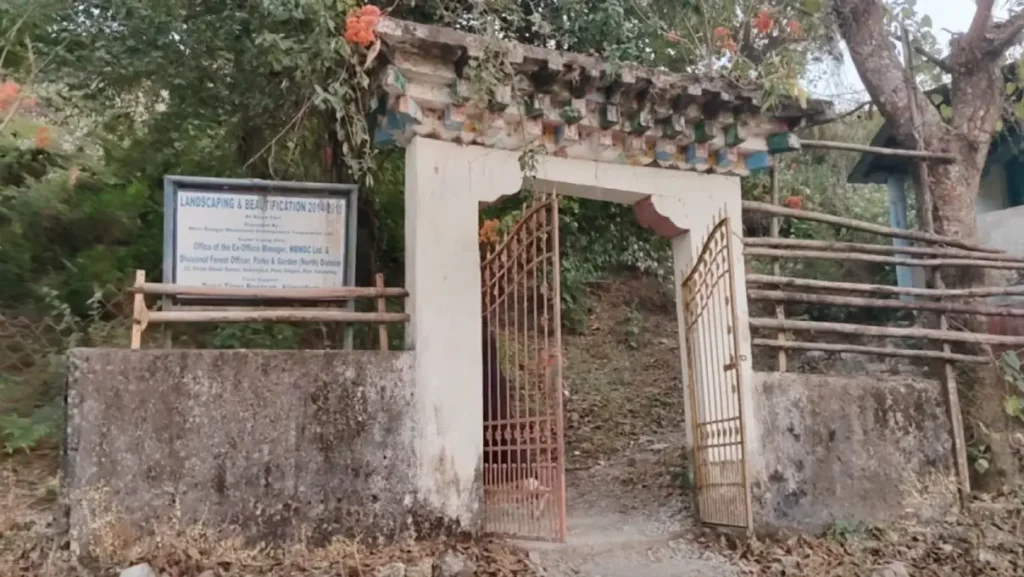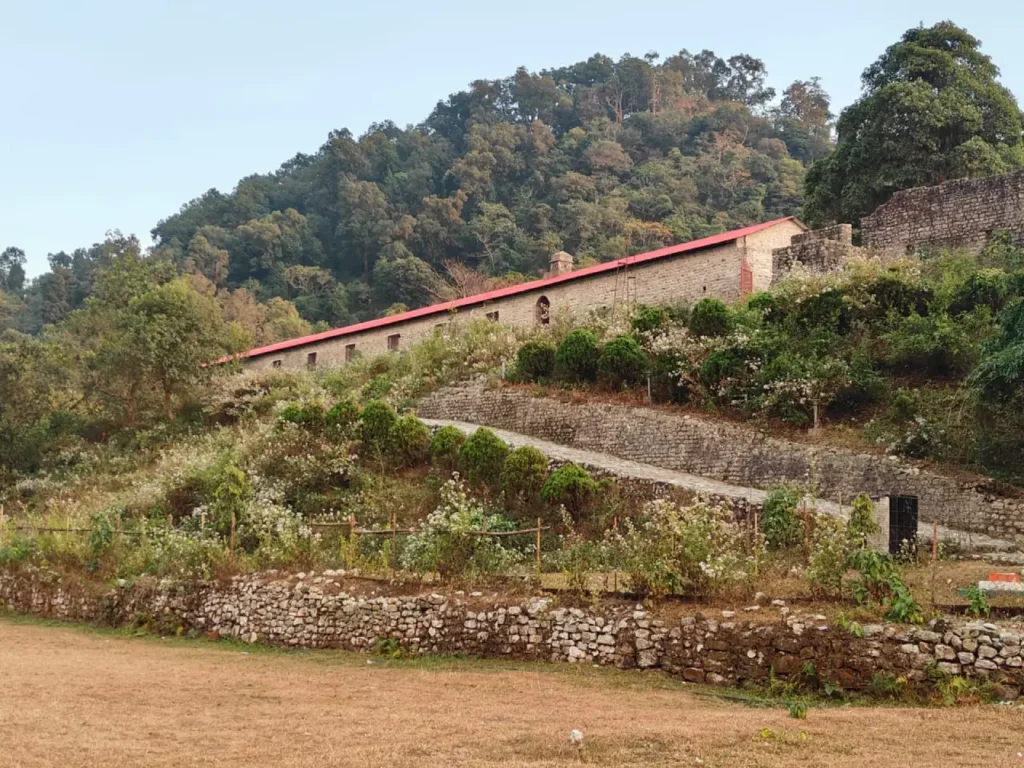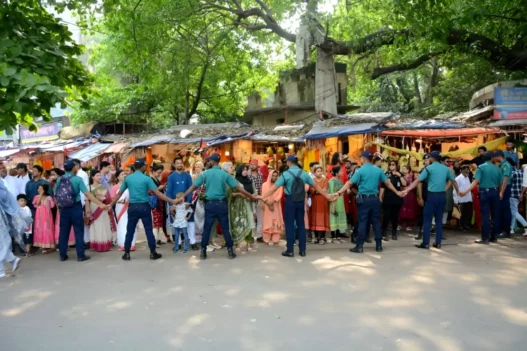Deep in the emerald embrace of the Dooars, where mist curls through ancient trees and cicadas sing through the dusk, stands a forgotten sentinel of time—Buxa Fort. Perched at 2,844 feet above sea level and 30 kilometres from Alipurduar in West Bengal, the journey to this stone-walled relic is not just a trek through lush forest trails, but a passage into history itself. From the laid-back hamlet of Santalabari, five kilometres below, the path to the fort winds upward through dense foliage and pebbled roads, where every turn seems to echo with stories—of defiance, of sorrow, of resilience.
There is practically very little information readily available to authenticate the foundation of the fort. Locals often say it was built in the 7th century during the Tibetan invasions of the North East, while others attribute it to King Sangkalp of the Kamtapur dynasty, who may have raised it as a bulwark against the Tibetan advance. Over time, the fort passed through many hands—the Koch Kingdom, the Bhutanese who turned it into a garrison guarding a strategic stretch of the old Silk Route, and finally, the British, who captured it during the Second Dooars War in the late 18th century and reconstructed it in their own image.
Historical references indicate that Buxa Fort was rebuilt as a cantonment in 1873, initiated by the East India Company to safeguard the international route between Bhutan and India. Though its exact origins remain shrouded in time, it is over 200 years old. It passed through the hands of the Koch kings before the Bhutanese occupied it and later handed it over to the British on 11 November 1865 under the Treaty of Sinchula.
But it was in the shadow of empire that Buxa Fort earned its most haunting legacy. After the Cellular Jail in the Andamans, this stone bastion became one of the most notorious British prisons in India. Hidden away in the remote folds of the forest, it was chosen for its isolation and inaccessibility—a place where dissenters could be exiled, far from the public eye. Yet even within its oppressive silence, voices rose in resistance.
Among the most poignant testaments to this spirit is the fading inscription at the entrance, where Rabindranath Tagore’s words lie etched in stone. On May 8, 1931—25 Baisakh, 1338 by the Bengali calendar—the poet had written to the imprisoned freedom fighters, replying to a birthday greeting they had sent him. Today, time has worn down the letters, and decay threatens to erase the memory. Yet, to locals like James Bhutia—the guide whose name is as memorable as his stories—those fading lines are a sacred reminder. They are not just forgotten words; they are a call to remember.

Within those mossy walls once sat revolutionaries—many of them exiled and broken in body, but not in spirit. Their stories are not neatly filed in archives—they live on in the oral memories of villagers from Santalabari and the nearby edges of the Buxa Tiger Reserve. Their accounts offer more than what history books provide—truths woven into everyday life, in tales told over fires, in names whispered as one climbs the path to the fort.
Legends intertwine with history here, and none is more compelling than the enduring narrative of Subhas Chandra Bose. Local accounts and documentation alike suggest that Bose, the charismatic leader of the Indian National Army, may have been confined within these very walls during his imprisonment by the British. His presence lingers in stories told by elders and echoed by guides—tales that speak of a restless soul pacing within these stone chambers, plotting freedom while the forest outside held its breath.

After India’s independence, the fort found new purpose—as a refuge. It sheltered Tibetan monks fleeing Chinese occupation and later housed Bangladeshi migrants. But nature, too, has left its mark. The earthquake and floods of 1993 reshaped the landscape. What once was a hub of trade—the bustling Buxa Bazar with its juicy oranges, vibrant Sadar Market, and proud traditions—is now a place of ruins and recollection.
Yet the forest still breathes. Trekking routes unfold from the fort like the branches of a tree—towards Rover’s Point, a birdwatcher’s paradise three kilometres uphill; to Roopam Valley, six kilometres deeper and nestled along the Bhutan border; and to Lepchakha, a five-kilometre journey that opens to panoramic views of North Bengal’s plains and Bhutan’s distant hills. The longest trail leads through thirteen kilometres of dense woods to Jayanti village—each step a communion with the past, each path a thread in Buxa’s story.

The ruins of Buxa Fort are not merely remnants of stone and mortar. They are haunted by letters, by dreams of freedom, by blood and poetry. They remind us that resistance isn’t always loud—it sometimes whispers through the trees, lies inscribed in forgotten walls, and lives in the eyes of those who remember.
Today, the district authorities may turn a blind eye to its fading inscriptions, but the fort endures—in the footsteps of trekkers, in the passion of guides, and in the stories that refuse to be buried. It stands quietly, cloaked in mist and memory, yearning for attention yet full of voice. A monument not just to those who dared to dream of a free India from behind prison walls, but to the forest itself, which still cradles those dreams in its rustling leaves and winding trails.
As long as the wind stirs the branches of the Buxa Tiger Reserve, and the mist wraps itself around those ancient stones, the fort will continue to speak—not with grandeur, but with grace. It exists, alive with its stories, waiting not just to be seen, but to be heard.







